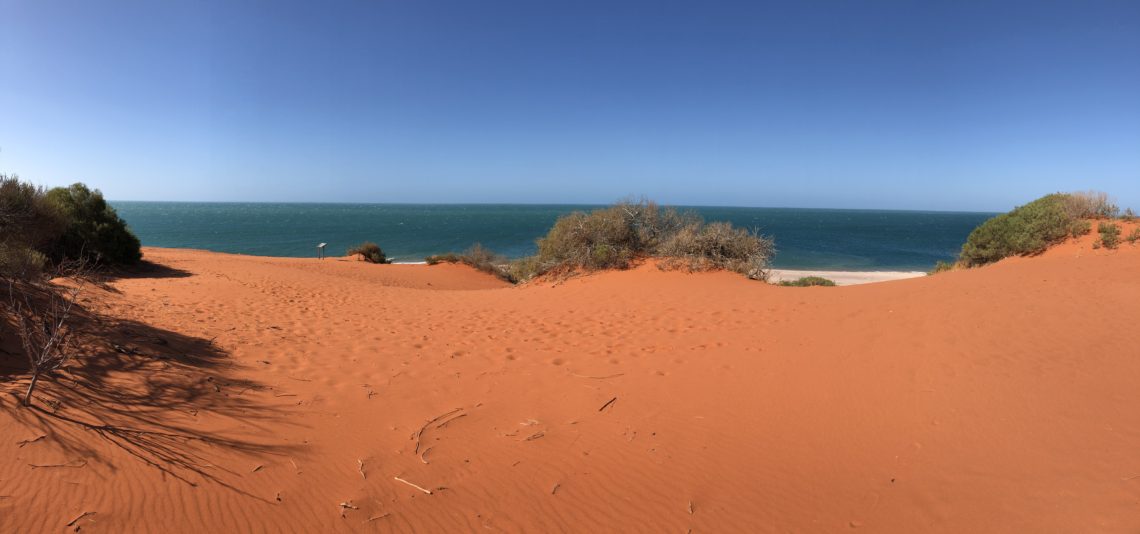
Spaceships, stromatolites, dugongs, red dunes, and dolphins – oh my!
After nearly two weeks checking out Ningaloo Reef, it was on to the next part of the west coast: Carnarvon, Shark Bay, and the Edel Peninsula. One of the most mind-blowing things about this trip, that strikes us again and again, is how we’ve already seen so much – including some truly “bucket list” places – but there’s still more ahead to see, and get really excited about. This truly is the experience of a lifetime and we’re counting our lucky stars every day that we get to be here!
On this leg, from Carnarvon to Perth, it’s hard to choose what we were looking forward to the most: hitting the westernmost point of mainland Australia at Steep Point, checking out wild bottle nose dolphins at Monkey Mia, seeing the planet’s earliest life forms at Hamelin Pool, or any one of the numerous surprises we were sure awaited us…needless to say all of these amazing sights don’t fit in to this single blog post! This one’s a two-parter.

Here’s a map of the area covered in this post. The first map shows a little more detail of this post’s geography specifically, and the second shows an overview of our entire trip so far. Green is the route discussed in this post, and red is what we’ve covered previously.
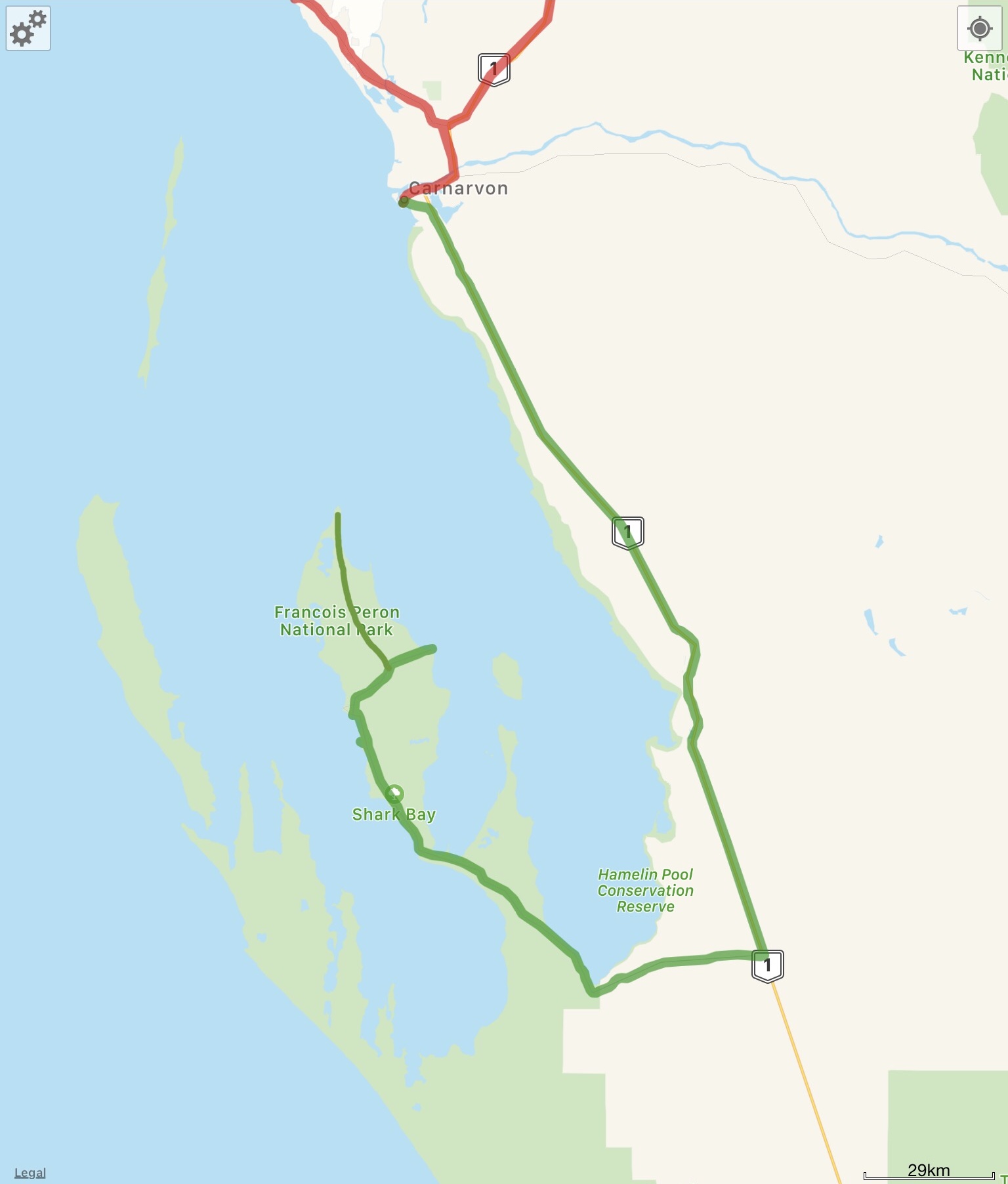

Our first stop out of Ningaloo Reef was Carnarvon. Due to a frustrating mechanical mishap that Nick may cover in a later post, we ended up being stuck there for about a week, which gave us a good amount of time to explore the town. We found the number one interesting thing about Carnarvon, population 4,000, is their history of being a part of the Apollo space program, by way of their space communication centre. They’ve set up a great little space museum just outside of town, well worth the $10 admission.
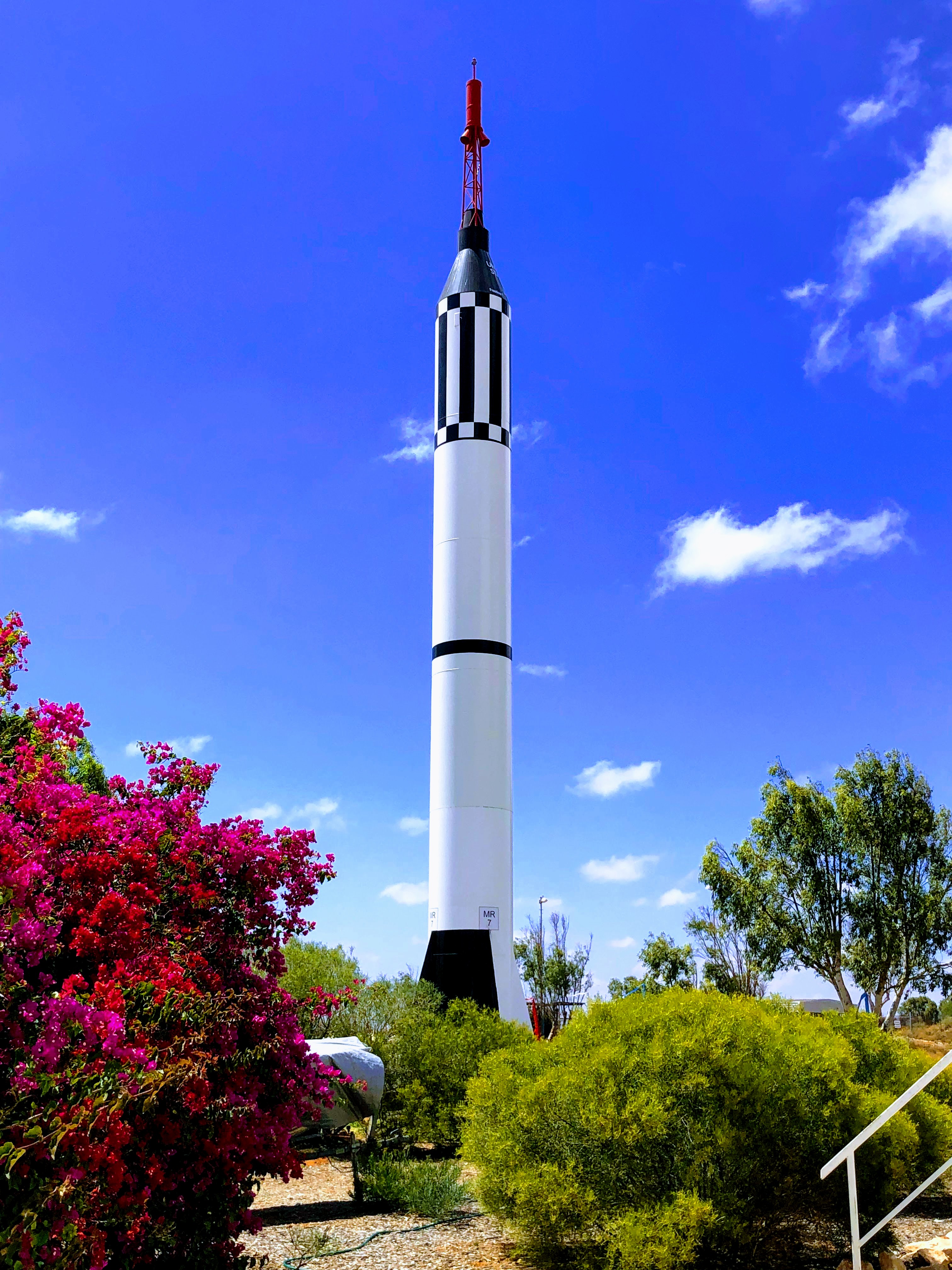



There are a ton of interesting exhibits but by far the most fun for young and old is the moon launcher simulator. Climb into your orange flightsuit and prepare for your trip to the moon! And yes, the real Apollo moon mission did go in this size of shuttle. Buzz and Neil were in there for 8 days!
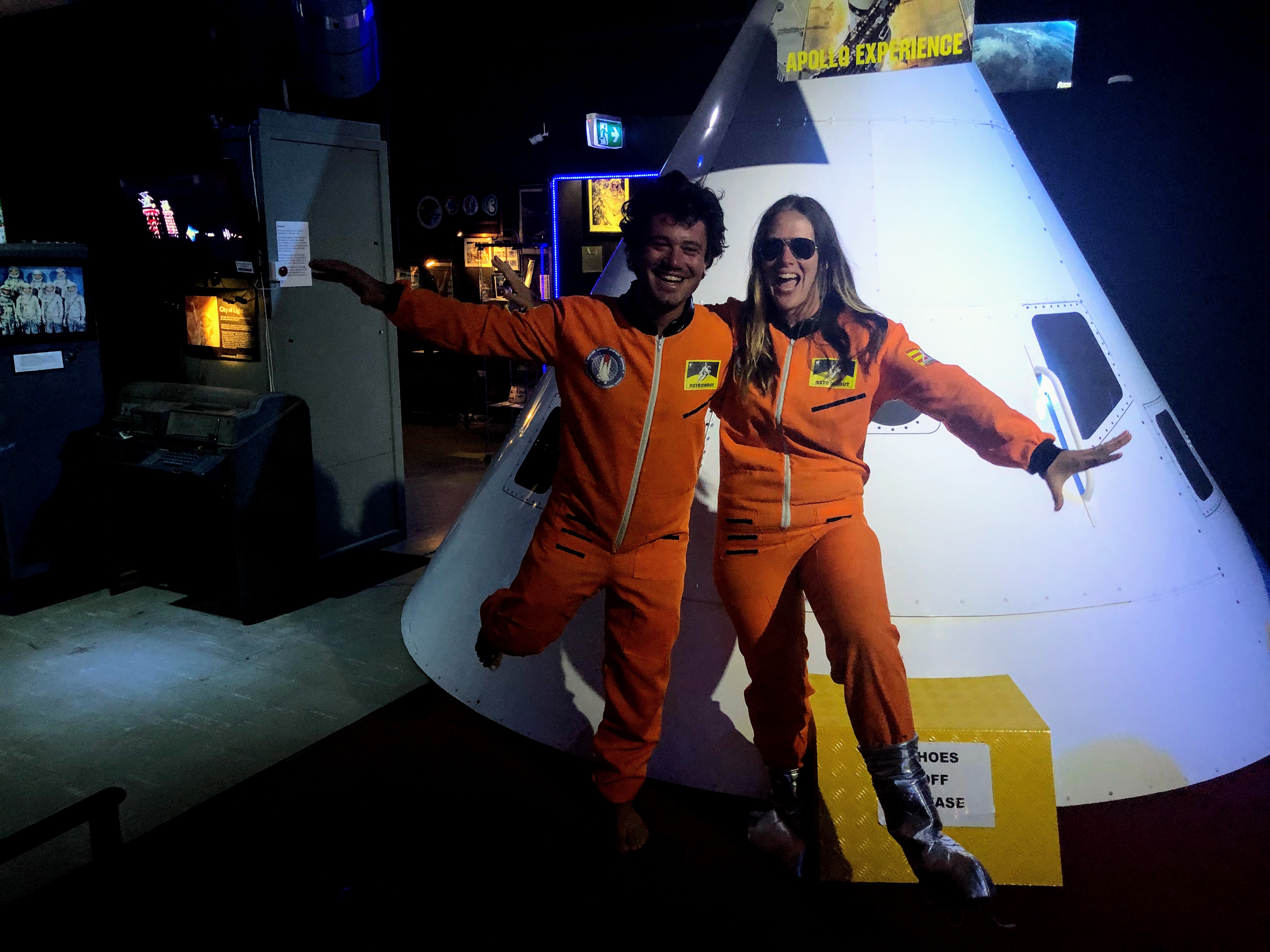
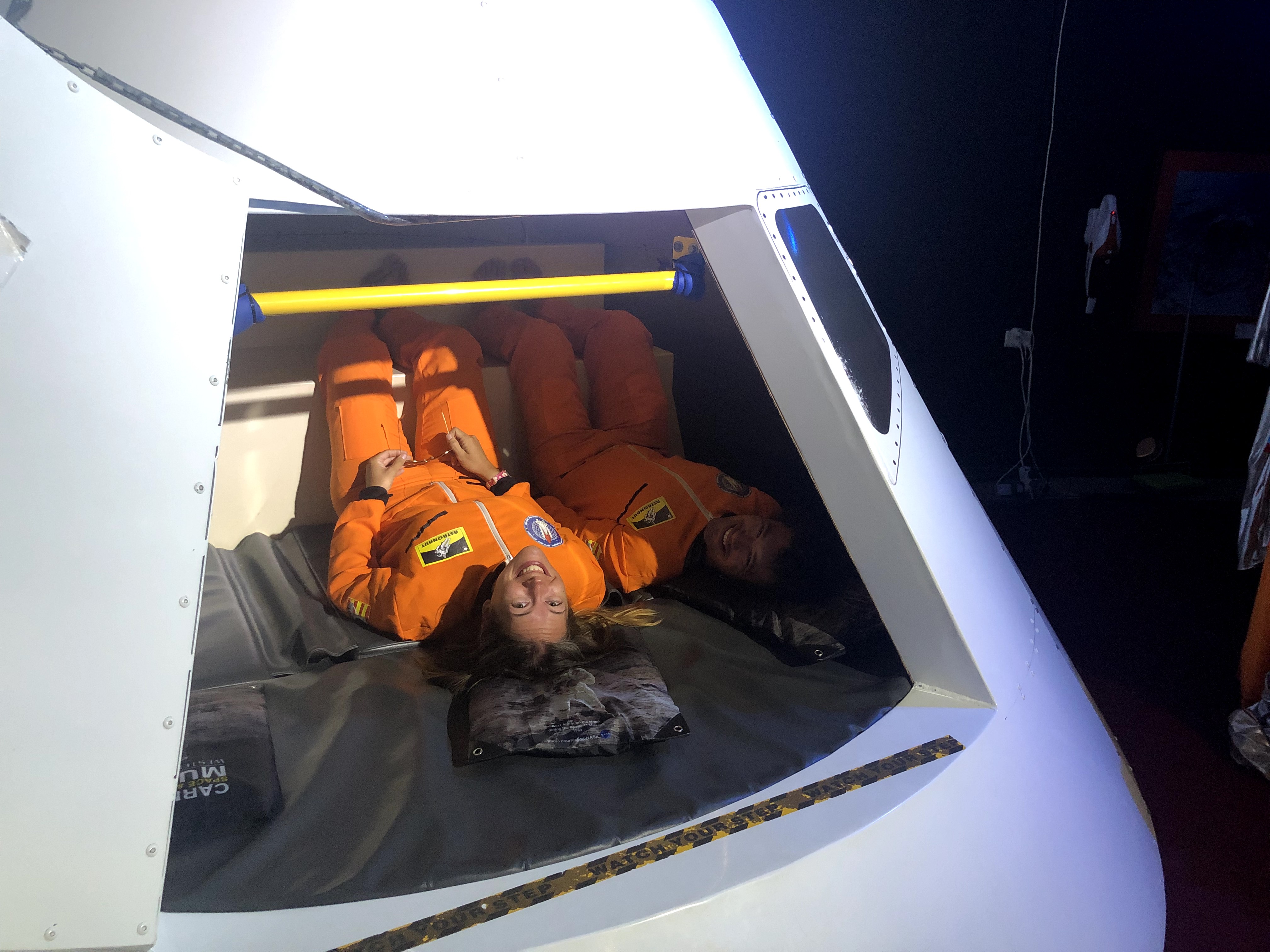
From Carnarvon we next drove over to an area called Shark Bay. There’s tons of stuff packed into this small area and we had a lot of ground to cover in a short period of time since we had fallen behind schedule in Carnarvon waiting for the Jeep to be fixed, and we needed to make it to Perth for a hotel reservation.

After this experience of rushing to Perth, and from rushing to Darwin back in September, we’ve decided to avoid making any bookings or commitments for the rest of this trip. We keep falling into situations where we get waylaid or held up, and then either rushing to make it somewhere in time for a booking, or unable to make it altogether. It’s a little anxiety-inducing for me, a planner at heart, to have no plan! But I think it’s worse to rush through everything on what’s meant to be a long, slow trip.
Our first stop out of Carnarvon was to see something we’d been looking forward to since reading Bill Bryson’s “In A Sunburned Country”: stromatolites.
What are stromatolites you ask? Oh, well, as if Australia didn’t have enough great history and mysteries for you (like how the Indigenous people got here in the first place, presumably by sea, and then promptly decided to never go anywhere by sea ever again…or how Australia was very nearly a French colony), here we go with yet another amazing Australian thing.
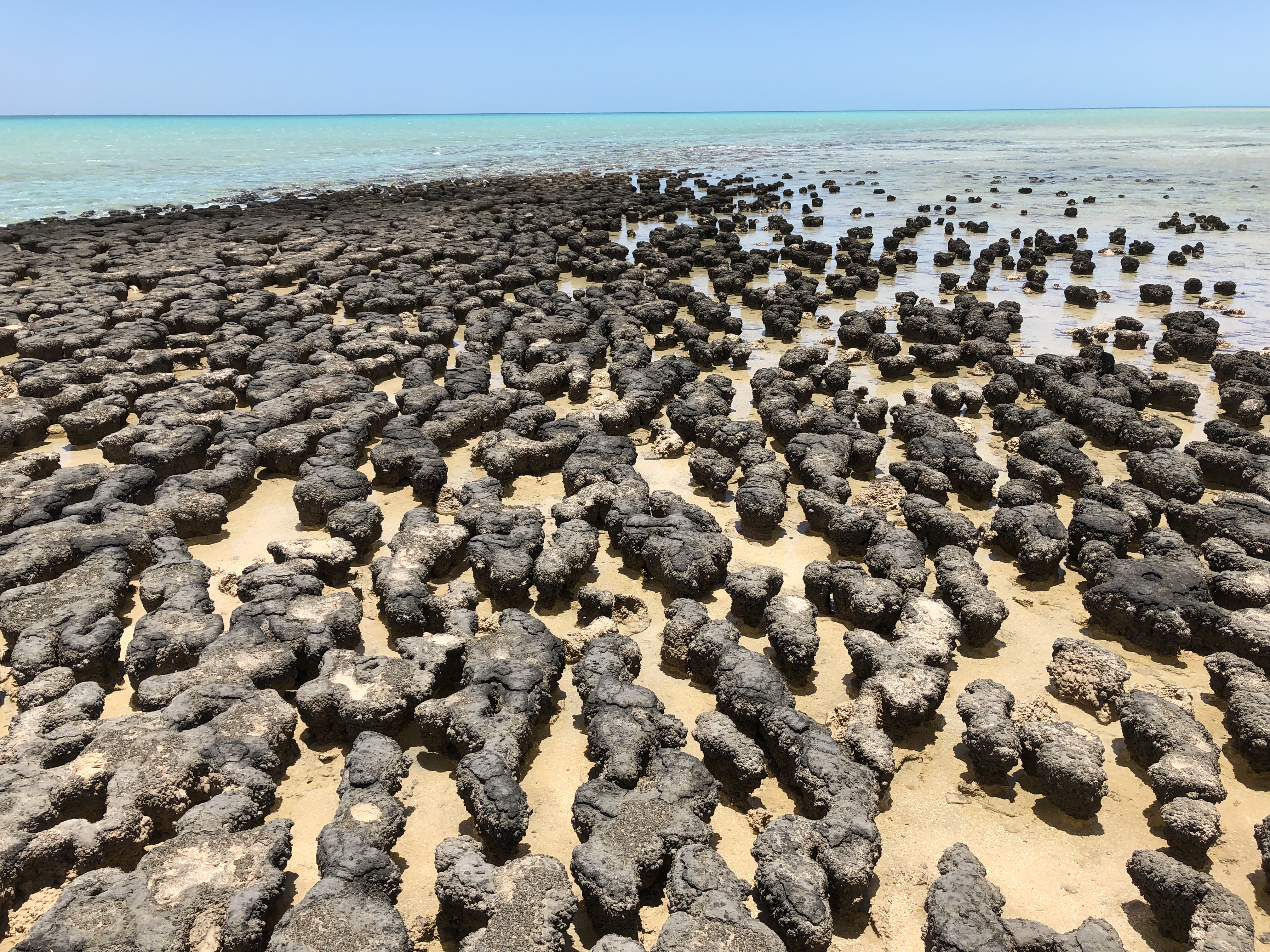
Stromatolites look like towers of rock, but are actually “rainforests” of communities of 3.5 billion year old Cyanobacteria (to put that into context, the earth has been around for about 4.5 billion years, and humans about 195,000 years). There are only a few places where stromatolites still exist today – and we are lucky enough to have travelled near one of them in Australia – Hamelin Pool.
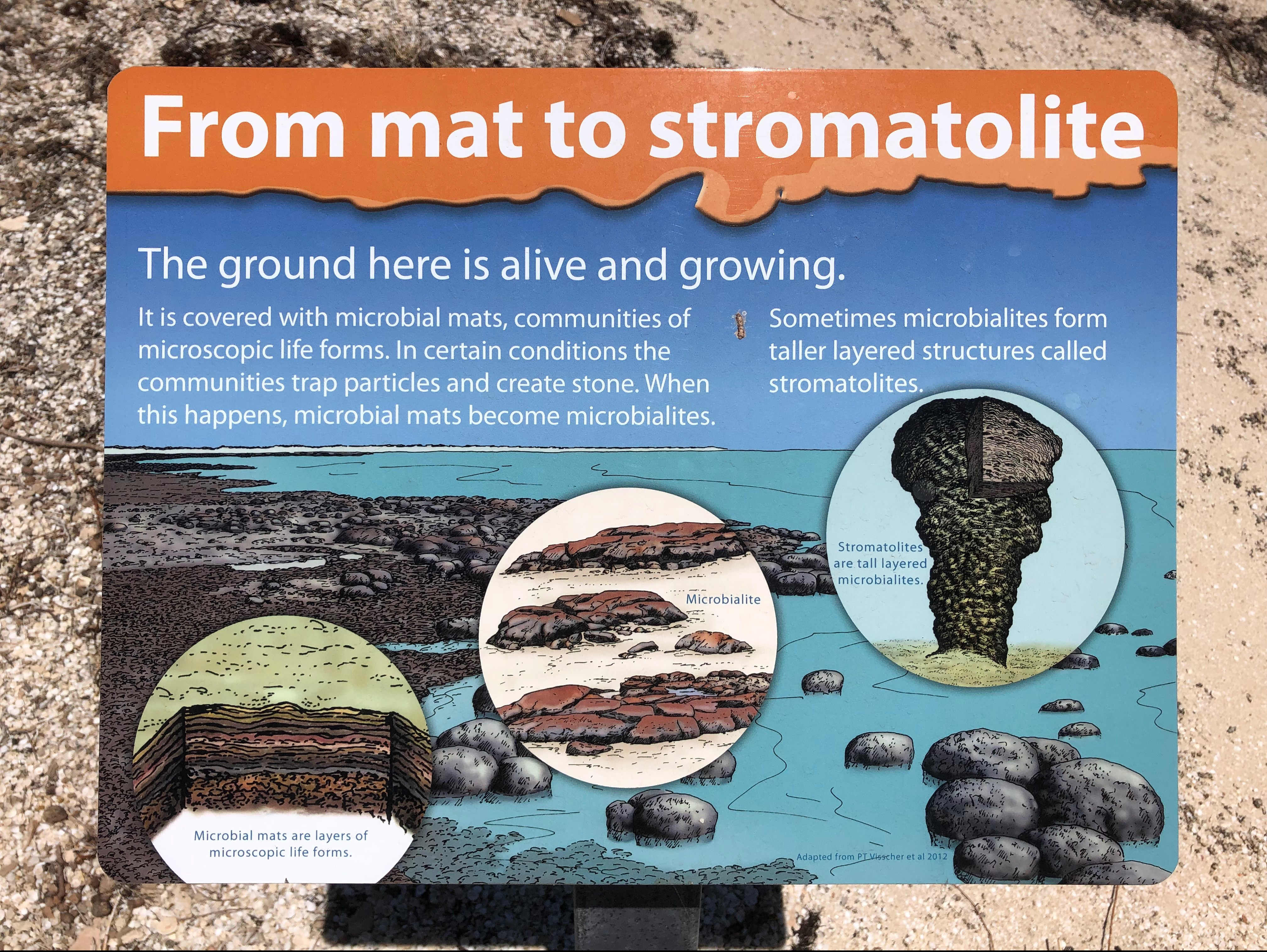
Also nearby the stromatolite colony is a cockle shell quarry. The early settlers of this region used fossilised cockle shells to make bricks for their buildings. Pretty amazing and resourceful!
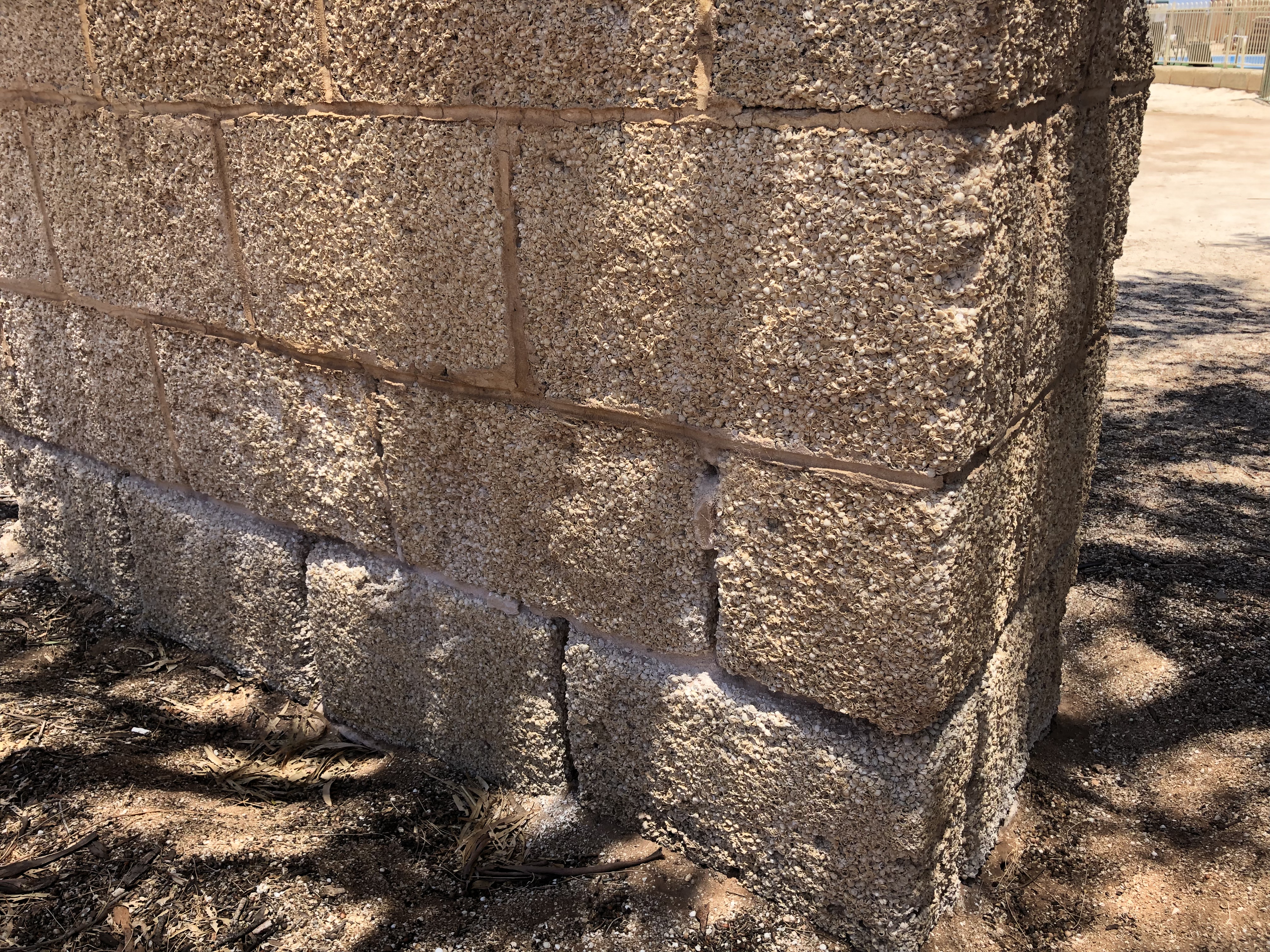
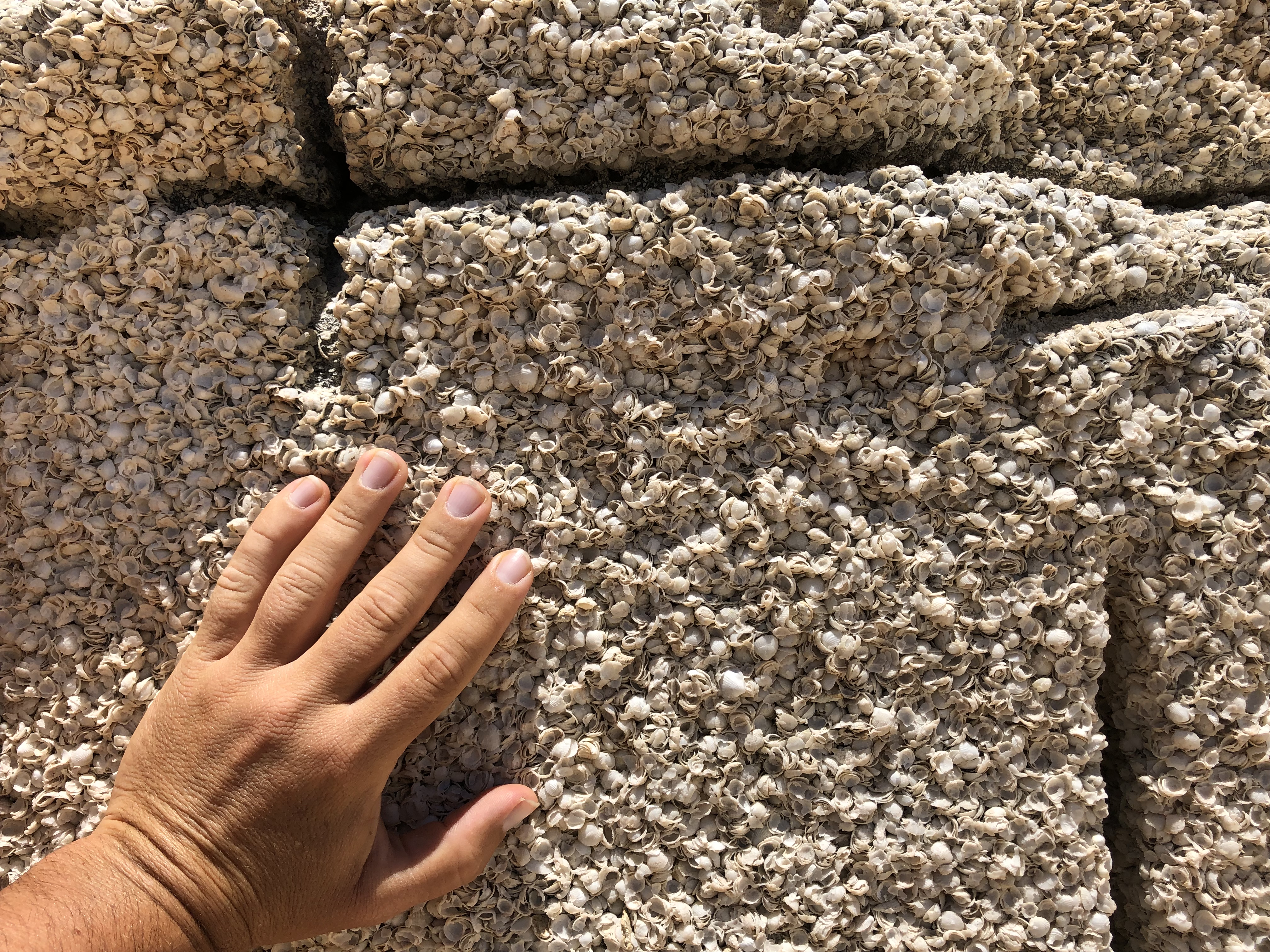
Next stop was François Peron National Park, named for a French botanist who visited Australia in 1801 and 1803. This park was an amazing surprise. We knew it was there before the trip started, and we knew we were going to go, but neither of us was expecting to find it quite as amazing as we did.
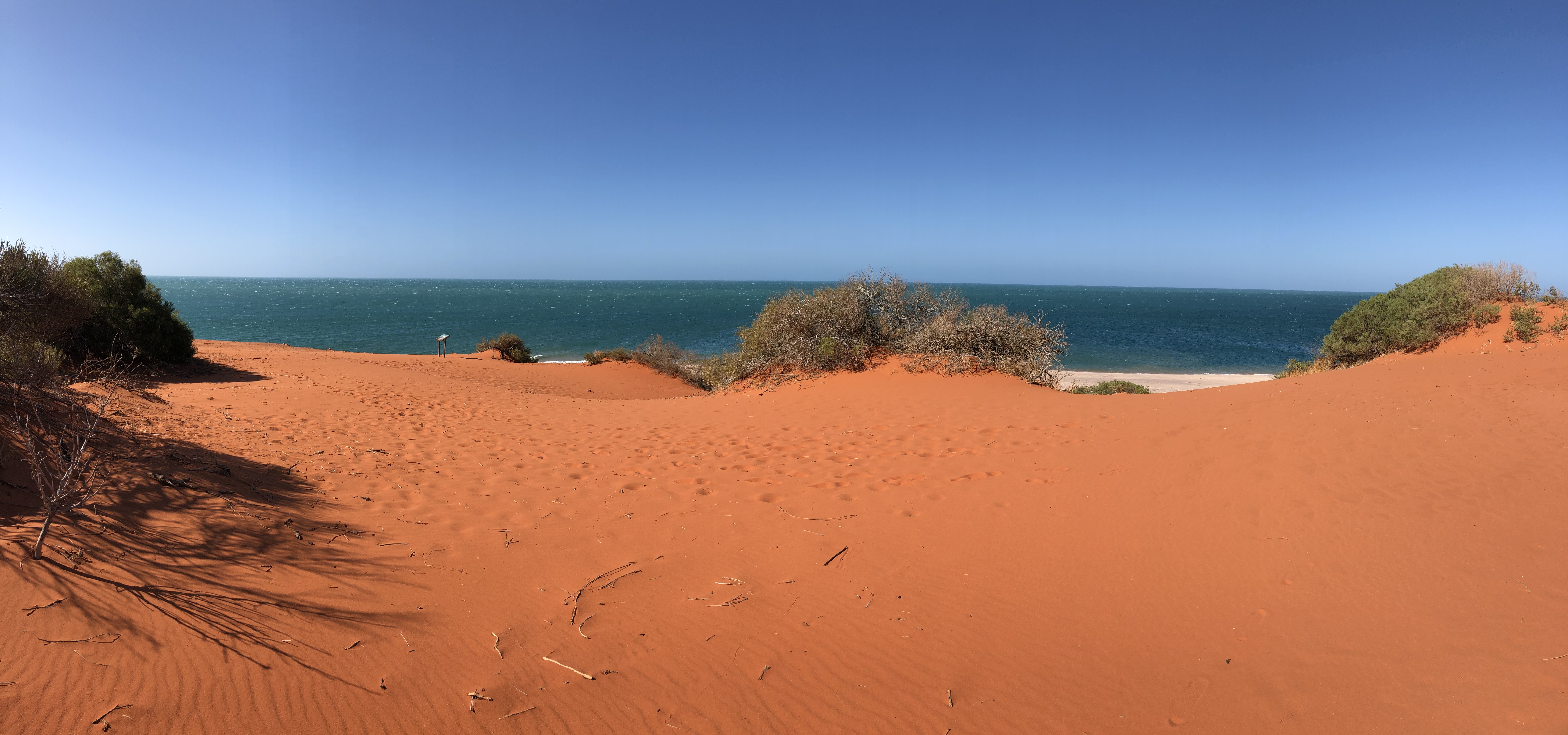
We were only able to spend one afternoon exploring the park, but in just that one afternoon we saw red sand dunes meeting blue ocean, a natural Artesian hot tub at the old homestead, a mother dugong and her baby, and countless manta rays and sea turtles. Wow. 10/10 I hope we get to see this place again!

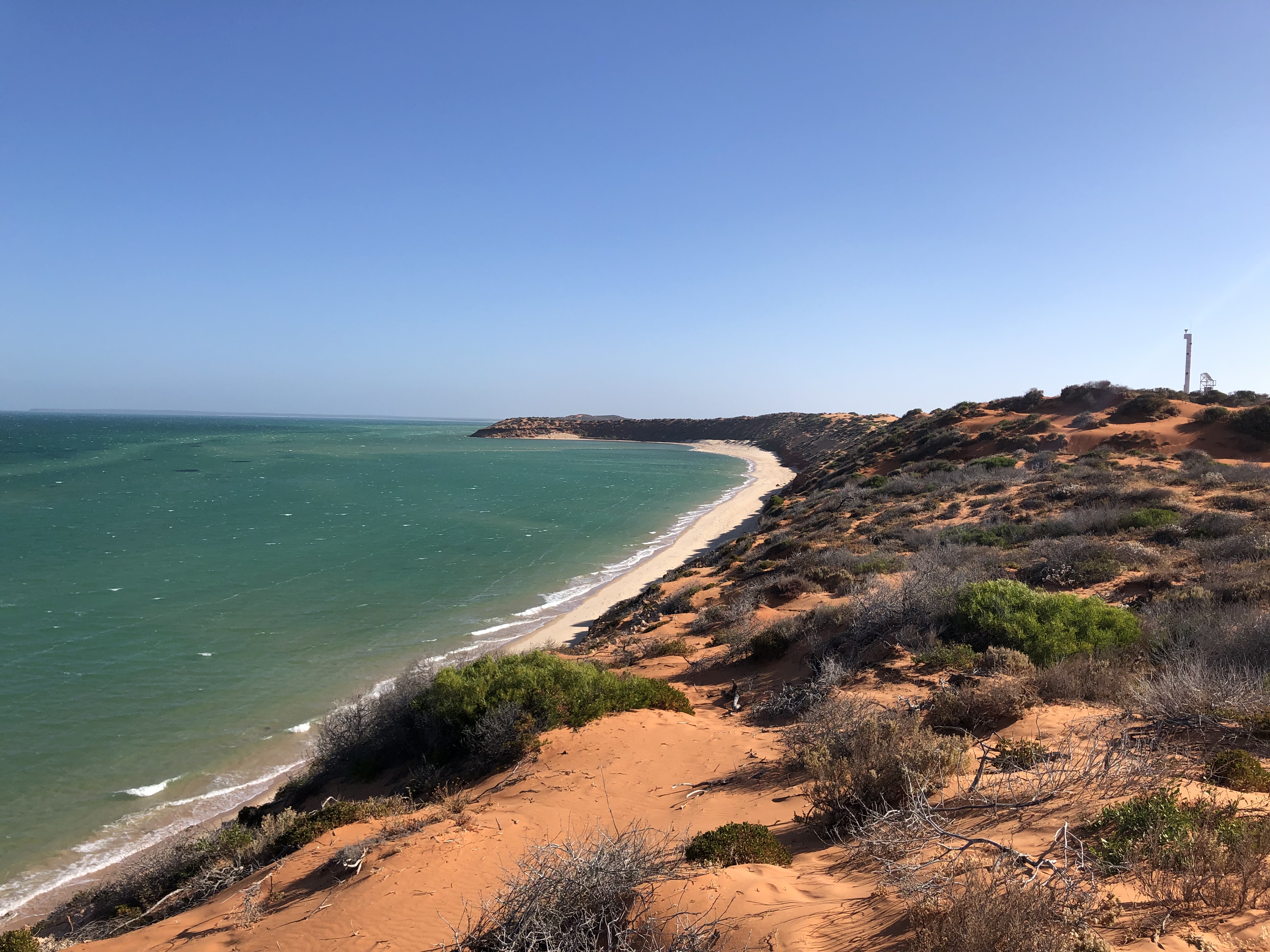
Finally, after that wildlife teaser at François Peron, we rolled into our campsite at Monkey Mia, which has unique wildlife to boast of its very own. Not monkeys, as you might think from the town’s namesake, but a pod of pretty special bottlenose dolphins.

Dolphins began visiting the beach in the 1960’s when local fishermen began to share their catch. Trust grew between the humans and the dolphins and eventually the dolphins were visiting every day to get a feed of fish.

As you can imagine this didn’t end up being very healthy for the dolphins, many of their calves (baby dolphins) died because of not being taught the proper skills to hunt and catch their own food. As a result the Department of Conservation now oversees the site with strict rules to only give the dolphins maximum 10% of their daily food requirements. As you can imagine it’s a huge tourism draw and some tourists are even lucky enough to be able to feed the dolphins occasionally, under supervision of the volunteers and the Department of Conervation rangers.

When we were there, we were lucky enough to see an infant baby dolphin, only about six weeks old, named Pan. S/he was swimming around making cute chirping noises, and there were new rules in place around how many people could be in the water, and how frequently the feedings could take place as the baby calf needs to feed about once every 20-30 minutes.
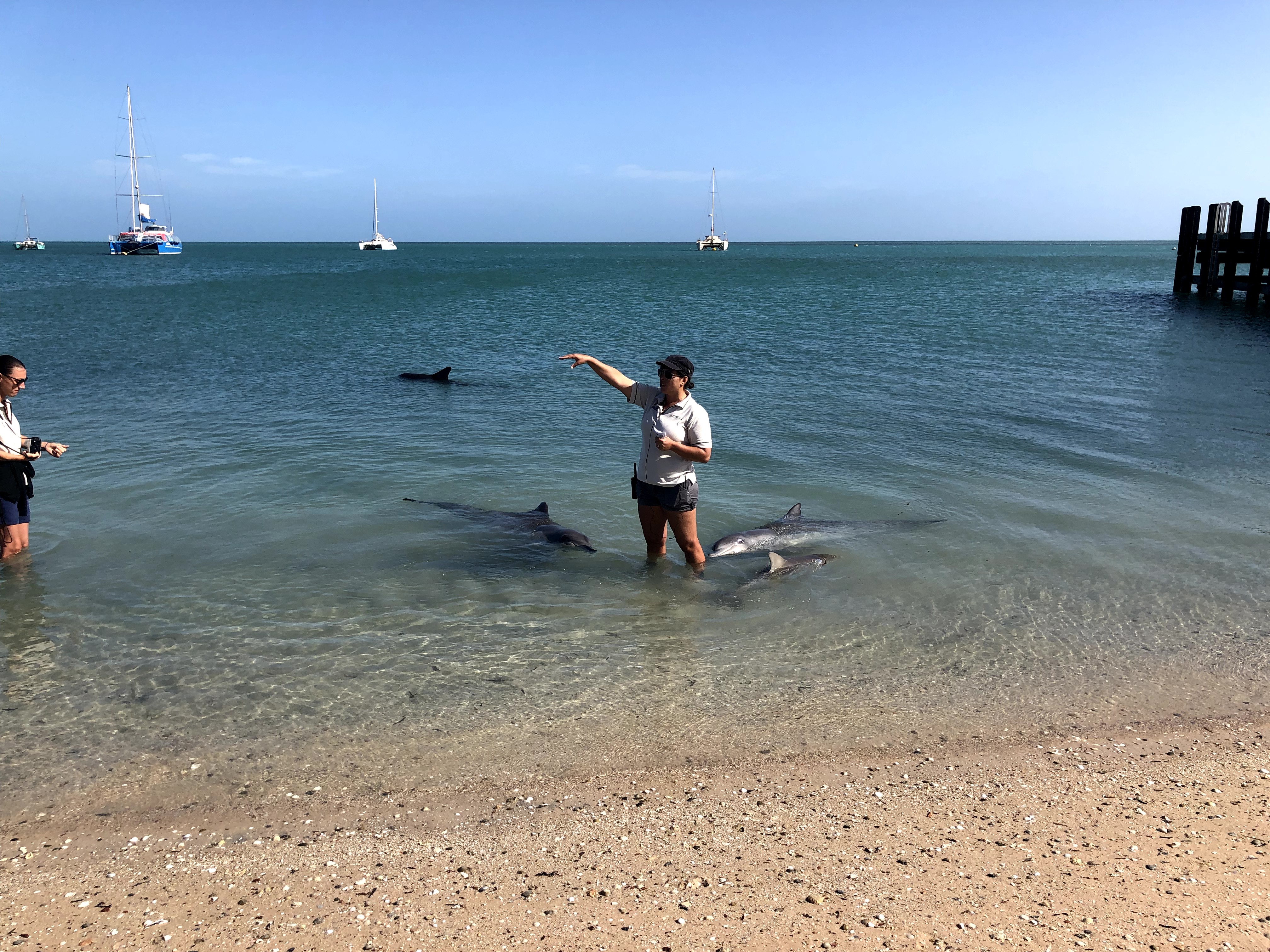
I’ve got to say, I sort of thought the Monkey Mia tourist experience would be underwhelming, but I was so incredibly charmed by the dolphins I didn’t want to leave! I wish we could have stayed for longer (this is definitely becoming a trend in Western Australia!! We are going to have to come back here)…but the next day, it was on to Steep Point and the Westernmost point of mainland Australia, and then a straight shot down the coast to Perth!
What We’re Listening To These Days: we’ve gotten onto “The Daily” podcast from the NY Times – 20 minutes every weekday, on a news subject of the day. It helps us feel more in touch with what’s going on in the world (though it’s pretty US-centric admittedly).

